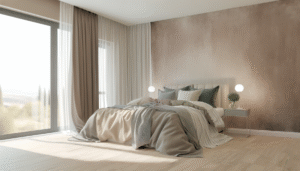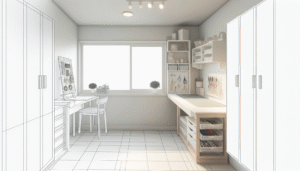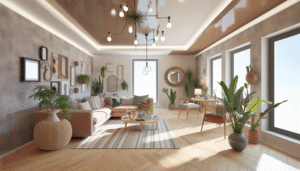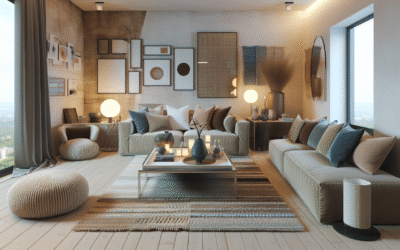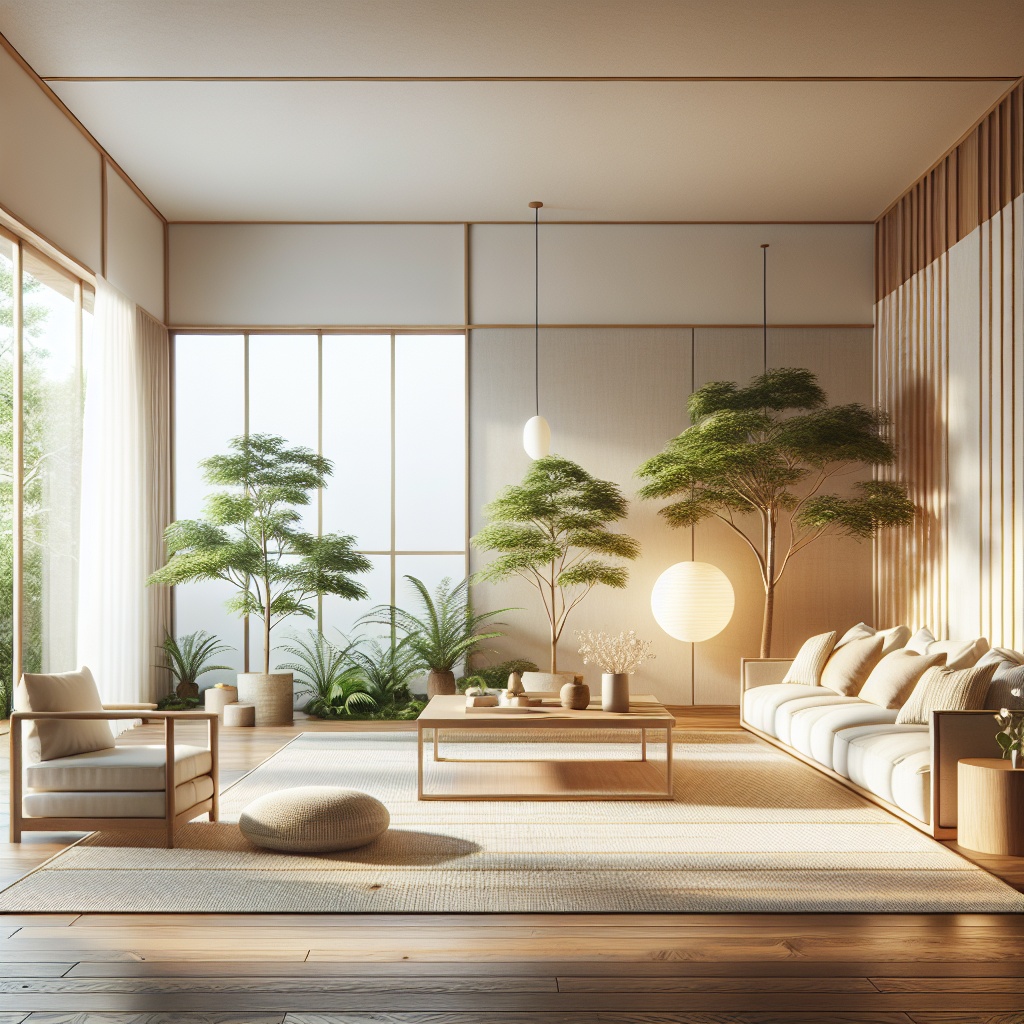
Are you struggling to create a harmonious atmosphere in your home? The blend of Japanese and Scandinavian styles—known as Japandi—offers a solution. This design aesthetic emphasizes simplicity, functionality, and warmth, making it ideal for anyone seeking tranquility in their living space. In this article, you will learn how to incorporate warm tones in Japandi minimalism, with actionable tips to enhance your décor.
We’ll explore the essence of Japandi design, practical styling tips, and how to create a welcoming ambiance using warm hues. Whether you are a design novice or a seasoned decorator, this guide will walk you through the essential elements of Japandi minimalism.
Roadmap of Contents: We’ll cover the core principles, essential elements, practical tips for implementation, and common misconceptions associated withJapandi design.
Understanding Japandi: The Core Principles
The Japandi aesthetic merges the natural affordability of Scandinavian design with the refined simplicity of Japanese style. Here are the key elements:
- Minimalism: Less is more in both styles. It’s about eliminating excess.
- Warmth: A focus on warm, earthy tones brings a cozy feel.
- Natural Materials: Emphasis on wood, stone, and handmade items.
- Functionality: Each piece should serve a purpose while maintaining beauty.
Essential Elements of Japandi Design
Color Palette
The key to creating the perfect Japandi atmosphere lies in your choice of colors. Embrace various shades of neutral, earth, and warm tones like beige, taupe, and terracotta. These colors provide a calming backdrop that enhances the minimalist look.
Furniture
Furniture in Japandi design is functional yet elegant. Look for pieces that feature clean lines and natural materials. Scandinavian furniture often has light woods, while Japanese styles incorporate darker woods. You can create a balance by mixing both styles.
Textiles
Soft textiles add warmth to your space without clutter. Use natural fabrics like linen, wool, or cotton for cushions and throws in warm hues. Textured rugs can also play a significant role in enhancing comfort.
Practical Tips for Implementing Japandi Design
Start with a Neutral Base
Your walls should ideally be painted in soft neutrals. A light beige or soft grey creates an excellent background to build upon.
Incorporate Natural Elements
Integrate plants and natural textures into your space. Succulents or bamboo can add a touch of nature while contributing to the calming effect of your interior.
Mix and Match
Don’t hesitate to blend Scandinavian and Japanese elements. For instance, pair a Japanese tatami mat with Scandinavian chairs, or use Scandinavian light fixtures with Japanese wooden tables.
Common Misconceptions About Japandi Design
One of the major misconceptions is that it has to be rigidly minimal. In reality, it allows for some personal touches, provided they align with the overall aesthetic. Another myth is that warm tones can’t be part of a minimal aesthetic. We’ll show you how to incorporate these tones effectively.
Case Studies: Successful Japandi Spaces
Several homeowners have successfully curated their living spaces using Japandi design. For instance, a couple in Copenhagen transformed their cramped apartment using subtle hues and carefully selected furniture that merges both styles.
Frequently Asked Questions
What is the primary characteristic of Japandi design?
Japandi design is characterized by its blend of Japanese minimalism and Scandinavian functionality, focusing on simplicity, clean lines, and warm tones.
Can I use warm colors in a minimalist design?
Absolutely! Warm colors can enhance the cozy feel of minimalist spaces without overwhelming them. Use them in accents and textiles.
What materials should I use?
Natural materials like wood, stone, and organic textiles are ideal. They contribute to an inviting and earthy atmosphere.
Is Japandi design expensive?
The cost greatly depends on the materials and furniture chosen. You can find budget-friendly options that still embody the aesthetic.
How can I start my Japandi journey?
Begin by decluttering your space, choosing a neutral palette, and incorporating natural materials. Prioritize quality over quantity.
Conclusion and Next Steps
In conclusion, Japandi minimalist design with warm tones can create a peaceful, inviting atmosphere in your home. By blending the best of Japanese and Scandinavian styles, you will be able to cultivate a space that speaks to your personal taste while being restful and functional. Start your journey today and don’t hesitate to explore the unique aspects that speak to you.
Next Steps: Explore more of our content on minimalist design, interior styling, and home decor trends!
Content Disclaimer
This article is for informational purposes only. For specific design advice tailored to your needs, consult a professional interior designer.
Categories
- Accent Walls & Ceilings (61)
- Art Curation & Gallery (62)
- Bedding Style Trends (68)
- Bedroom Makeover (81)
- Bohemian & Eclectic Styles (58)
- DIY & Budget-Friendly Decor (64)
- Eco-Friendly Design (62)
- Furniture Care (71)
- Home Decor & Design Ideas (162)
- Home Wellness Spaces (59)
- Integrated Outdoor Living (67)
- Japandi Style (61)
- Kids and Nursery Decor (59)
- Living Room Decor (79)
- Mix & Match Techniques (73)
- Modern & Contemporary Design (66)
- Rug Sizing & Placement (73)
- Scandinavian Design Inspiration (20)
- Seasonal Home Decor (79)
- Small Space Solutions (73)
- Wall Art & Painting Tips (77)
Recent Comments
Archives
Product Gallery
-
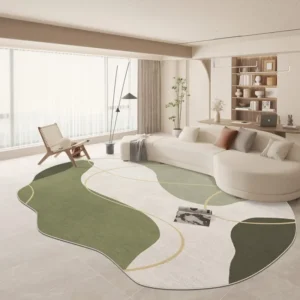 Large Area Green Rugs for Bedroom Nordic Living Room Decoration Shaped Carpet Irregular Plush Lounge Rug Home Thick Washable Mat
Rated 5.00 out of 5$54.94 – $346.41Price range: $54.94 through $346.41
Large Area Green Rugs for Bedroom Nordic Living Room Decoration Shaped Carpet Irregular Plush Lounge Rug Home Thick Washable Mat
Rated 5.00 out of 5$54.94 – $346.41Price range: $54.94 through $346.41 -
 Nordic Style Rugs for Bedroom Morandi Living Room Decoration Carpet Large Area Geometry Lounge Rug Home Cloakroom Non-slip Mat
Rated 5.00 out of 5$39.46 – $597.66Price range: $39.46 through $597.66
Nordic Style Rugs for Bedroom Morandi Living Room Decoration Carpet Large Area Geometry Lounge Rug Home Cloakroom Non-slip Mat
Rated 5.00 out of 5$39.46 – $597.66Price range: $39.46 through $597.66 -
 Irregular Shapes Living Room Decoration Carpet Modern Style Rugs for Bedroom Home Thicken Plush Rug Fluffy Soft Lounge Floor Mat
Rated 4.83 out of 5$55.84 – $347.37Price range: $55.84 through $347.37
Irregular Shapes Living Room Decoration Carpet Modern Style Rugs for Bedroom Home Thicken Plush Rug Fluffy Soft Lounge Floor Mat
Rated 4.83 out of 5$55.84 – $347.37Price range: $55.84 through $347.37


